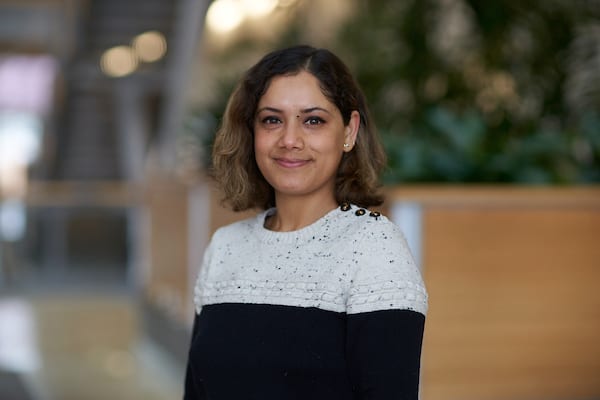A Taste for Data
Shelf life is an important variable when it comes to snack foods. But how can shelf life be predicted when new products are being developed? The starting point is often data from taste tests. Turning that data into a predictive model is not a simple task. And that is why PepsiCo, teaming up with the New York Academy of Sciences, posed the problem as a challenge to young scientists.
Pallavi Gupta, a graduate student in laboratory of Blake Meyers who is pursuing her PhD in Informatics at the University of Missouri, Columbia, heard about the competition and decided to enter the Data Science in Research and Development Challenge alongside 1,235 scientists from 42 countries, including the US, Ireland, the UK, Canada and India.

Pallavi Gupta, Graduate Student in the Meyers Lab
“I love to analyze data,” Pallavi said, quickly breaking into laughter. She was given a data set from 81 individual shelf-life studies without the product name, and 14 days to complete the challenge. The data came from evaluations of changes in the taste of snack products as they aged. The goal was to develop a useful shelf-life model that would allow a product developer to predict shelf life based on the product, process, packaging information, storage conditions, and etc. related to where the product would be sold. Pallavi used machine learning to create a model to solve the challenge.
She was among ten finalists selected to present their solutions virtually in five minutes to a panel of judges, made up of PepsiCo employees from Data Science, R&D, and People and Culture departments. A few days later she got the call to tell her that she was the Grand Prize winner of the Challenge! And as a result, she will participate in a six-week internship with PepsiCo’s R&D Data Analytics team this summer.
“I am looking forward to the internship with PepsiCo, to test my skills and to gain additional experience with data analytics using machine learning techniques, and apply them to my own research in genomics,” Pallavi said.
In the Meyers lab, Pallavi is using computational and machine learning approaches to study how small non-coding RNA (also known as “small RNAs) – are involved in the regulation of gene expression. She also works with labmates to help them create computational solutions to address their research questions. Using a computational approach, she was able to help one labmate reduce two to three days of manual phylogenetic work to about 10 minutes.
“Pallavi started in my group as a summer intern, while working on her master’s degree from Saint Louis University,” said Blake. “She quickly became known for her ability to tackle tricky informatics problems with elegant approaches. While I wouldn’t have imagined that bioinformatics translates to snack food analysis, I’m not surprised in the least that Pallavi’s talents and interests have such remarkable breadth and applicability.”